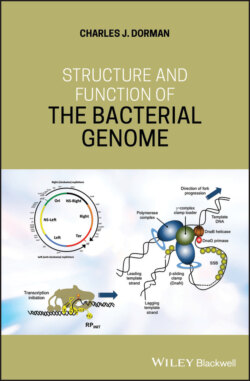Читать книгу Structure and Function of the Bacterial Genome - Charles J. Dorman - Страница 61
1.50 H‐NS Functional Homologues: Rok from Bacillus spp.
ОглавлениеThe Rok protein was discovered in B. subtilis during an investigation of gene regulation in the competence system: Rok emerged as a transcription silencer of comK, the autoregulated master controller of competence (Hoa et al. 2002). Rok controls the expression of an extensive regulon of genes (Albano et al. 2005) and at some of its gene targets its activity is amplified by co‐binding of the DnaA protein (Seid et al. 2017). Rok binds to A+T‐rich DNA targets (Smits and Grossman 2010) and, like H‐NS, it has been implicated in the silencing of genes that have been acquired by HGT (Duan et al. 2018). Rok exhibits a higher preference for specific DNA sequences than other xenogenic silencer proteins (e.g. H‐NS) and these targets are relatively rare in the B. subtilis core genome, allowing Rok to focus on imported genes (Duan et al. 2018). Rok binds only in the DNA minor groove and uses a winged helix fold to do this. It avoids rigid poly‐A tracts with their very narrow minor grooves (Rohs et al. 2009), preferring 5′‐AACTA‐3′ and 5′‐TACTA‐3′ (both underrepresented in the core genome) and sequences that contain the flexible TpA step (Duan et al. 2018; Travers 2005).
